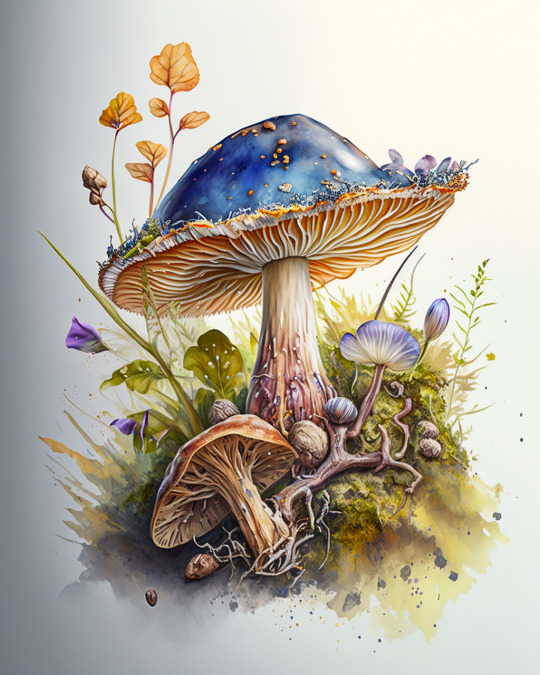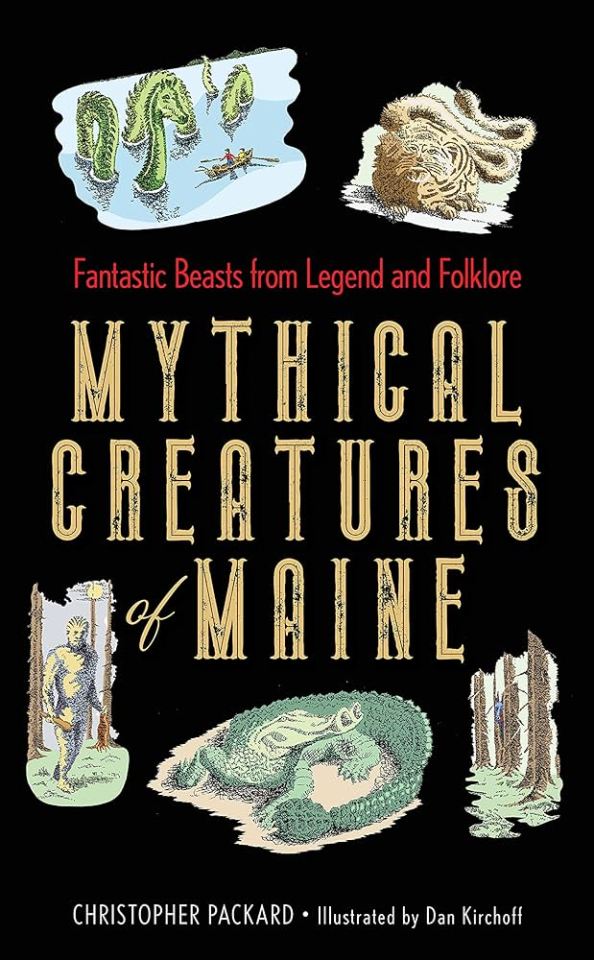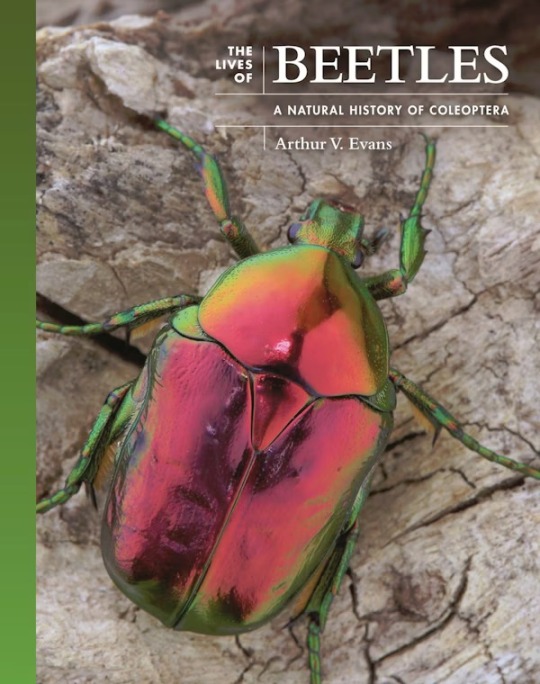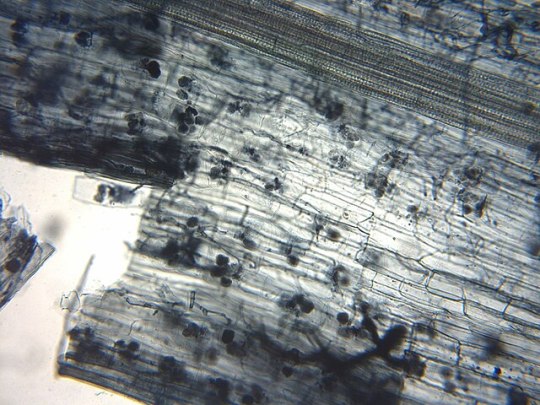#mycology education
Explore tagged Tumblr posts
Text
Just one drop and you're history "The Deadly Death Cap Mushroom"
youtube
#The Deadly Death Cap Mushroom#death cap mushroom#Amanita phalloides#mushroom toxicity#poisonous mushrooms#mushroom identification#foraging safety#symptoms of poisoning#mushroom poisoning#wild mushrooms#toxic fungi#first aid for mushroom poisoning#mushroom awareness#edible vs poisonous mushrooms#mycology education#fungal hazards#identifying death cap#mushroom foraging risks#toxic mushroom symptoms#awareness about death cap mushroom#mushroom#Youtube
2 notes
·
View notes
Text

Fungi February: The candy cap's unique aroma makes it one of the few mushrooms that are just as good in desserts as in entrees. As a little brown mushroom, there are numerous lookalikes, some of which are toxic.
Disclaimer: Don’t rely on pictures of cute mushrooms with eyes to accurately identify edible mushrooms. At best the wrong one will taste bad, at worst it’ll be deadly!
104 notes
·
View notes
Text
This is one of my favorite fungi finds from my visits to the Ozarks, the corticioid fungus Aleurodiscus oakesii. It is a saprophytic species that only consumes some of the outer bark of the tree, so while it causes cosmetic changes it isn't generally harmful to its host. However, the thinning of the bark that results can weaken the tree's defenses against pathogens, causing a secondary infection.
#fungus#fungi#mushroom#mushrooms#forest#Ozarks#trees#oak#oak trees#mycology#nature#woods#Missouri#scicomm#educational#ecology
19 notes
·
View notes
Text
Back again! Today, we have a very spooky fungus, scientifically called Hydnellum peckii, or commonly Devil's Tooth! It's a non-toxic fungus that, despite its name, is actually beneficial for conifer forests, and is often found in late summer and autumn!
Devils tooth grows about 10cm tall at most, but as small as 3cm! The cap is between 3-8 cm across when fully developed and is usually round but can be oval or multi-lobed! The young caps also secrete a red ooze as they grow, but generally stops when it reaches maturity!
Underneath the cap, the fungus doesn't have gills! It instead has spines, but very small ones, being between 1-5mm long and below 1mm in diameter!
The stem is quite variable, being as tall as 5 or 6cm but it's been seen as small as 0.5cm, but this is because the fungus stem is predominantly underground!
The fungus has a beneficial relationship with conifererous trees, sometimes called a symbiotic relationship, but in the fungus world, it can be called 'ectomycorrhizal'! The tree will give the fungal system, or mycelium, sugars, made during the photosynthesis process, and the fungus will give the tree access to more nutrients, because the fungus can burrow deeper than the trees roots! What a good friend!
The fungus derived its name from the greek word for 'edible mushroom' "hudnon"! The peckii comes from honouring an American mycologist called Charles Horton Peck!
Overall, Hydnellum peckii, or devils tooth fungus, is a beneficial fungus for conifer trees and an edible mushroom for people, albeit a very bitter and not tasty one! Fell free to like, comment and reblog, and follow for more! Now, without further delay, here it is!

12 notes
·
View notes
Text
I'm back posting this week! To make up for not posting for a week, I'm sharing a bonus article today. I'm pandering to pop culture; it's all about parasitic fungus.
#Science#Science communication#Scicomm#Stem#Science education#Science blog#mycology#fungi#biology#last of us
10 notes
·
View notes
Note

Here are some of the illustrations I’ve done so far (i should add perithecia)! I have Lichens of the North Woods by Joe Walewski. I wish I got a guide that covers New York better.
I have yeast on there as it’s an example of a symbiotic partner that’s not part of the standard pair or triad. It’s a Tremella yeast that is in a symbiotic relationship with and the yellow green lichen Lethara vulpina on the left (as I understand it)
Hi I’m planning out a lichen zine. I’m hoping to have an approachable but more in depth little booklet. Do you have any suggestions for what info I should include and what I can cut?
I’m torn on using specific names for things like reproductive structures and going into more of the subtypes of body structures.
This is a debate I (and many other lichenologists) have all the time within ourselves. They are so so many specific terms. And there are specific terms to describe those specific terms. And it never ends. So where to meet in the middle? A few terms I think are necessary to introduce:
Symbiosis
Mycobiont (Ascomycete) and Photobiont (green algae vs cyanobacteria)
Thallus, its layers (cortex, photobiont layer, medulla, rhizines), and the major growth forms (foliose, fruticose, crustose, squamulose)
Ascoma/fruiting bodies (apothecia and perithecia)
Asexual propagules (isidia, soredia, phyllidia)
Substrate (corticolous, saxicolous, terricolous)
I have a great little lichen field guide written by Dr. Erin Tripp, Field Guide to the Lichens of White Rocks (Boulder, Colorado), that I bought specifically because I think she does a masterful job of balancing accuracy and approachability. I recommend checking it out! Good luck! Sounds like a great project! Consider me an enthusiastic supporter.
#illustration#botanical illustration#mycology illustration#fungi#lichen#lichens#lichenology#biology#science#science education#art
68 notes
·
View notes
Text
I went searching for mushrooms in the garden of my work but theres none!!
Next shift I'll be looking on the trees as well as the mulch and grass.
Im genuinely surprised not to find any, as the light conditions and environment are perfect for some common agrocybe's and even Australian honey fungus!
#please let me identify mushrooms for you#mushroom#art#i love mushrooms#mushrooms#witch aesthetic#aestethic#education#nature#pagan witch#mycology#witchy#witchythings
0 notes
Note
我不會說法文但我可以講中文>:3
我從來沒有想過我會在雨世界的粉絲圈裡學真菌學,不過蠻有趣的
This is the first one that I have no idea what’s going on lol. Luckily for me, google translate exists!!!

See, that’s just what I do. I suck you in with fandom posts, and then BAM!!! MYCOLOGY EDUCATION!!! Thank you btw!!! :D
#It’s actually so fun getting asks in a bunch of different languages#You guys should send me more >:3#Too bad nobody can send me an ASL ask#Cause I can sign a bit!
17 notes
·
View notes
Text










/𝗶𝗺𝗮𝗴𝗶𝗻𝗲 𝗽𝗿𝗼𝗺𝗽𝘁:
𝗕𝗲𝗮𝘁𝗿𝗶𝘅 𝗣𝗼𝘁𝘁𝗲𝗿, 𝗠𝘆𝗰𝗼𝗹𝗼𝗴𝗶𝘀𝘁
The pervasive Victorian enthusiasm for natural history produced quite a few female amateur scientists, including ornithologist Genevieve Jones, lepidopterist Maria Merian, and fossil-hunter Mary Anning — “amateur” being not a reflection of their scientific rigor and dedication, which were formidable, but of the fact that a formal scientific education was virtually inaccessible to women, except for the rare Ada Lovelace or Maria Mitchell, and membership in scientific societies was strictly reserved for men. But Potter’s scientific work was exceptional in that she deliberately tried to penetrate the very institutions that dismissed women’s scientific labor solely on the basis of gender.
By her early twenties, Potter had developed a keen interest in mycology and began producing incredibly beautiful drawings of fungi, collecting mushroom specimens herself and mounting them for careful observation under the microscope. In the winter months, she frequented London’s Natural History Museum to study their displays.
First drawn to fungi because of their colours and evanescence in nature and her delight in painting them, her interest deepened after meeting Charles McIntosh, a revered naturalist and amateur mycologist, during a summer holiday in Dunkeld in Perthshire in 1892. He helped improve the accuracy of her illustrations, taught her taxonomy, and supplied her with live specimens to paint during the winter. Curious as to how fungi reproduced, Potter began microscopic drawings of fungus spores (the agarics) and in 1895 developed a theory of their germination.
Potter wrote up her conclusions and submitted a paper, On the Germination of the Spores of the Agaricineae, to the Linnean Society in 1897. It was introduced by Massee because, as a female, Potter could not attend proceedings or read her paper.
In 1997, the Linnean Society issued a posthumous apology to Potter for the sexism displayed in its handling of her research.
For more about Beatrix Potter read Maria Popova’s essay at themarginalian.org
#nature#mycology#fungi#mushroom#midjourney#midjourney art#midjourney ai#artificial intelligence#beatrix potter
125 notes
·
View notes
Text
The deadly Death Cap Mushroom —
youtube
It takes one drop of this deadly mushroom to kill an adult. It's ordinary looking, yet very potent.
#The Deadly Death Cap Mushroom#death cap mushroom#Amanita phalloides#mushroom toxicity#poisonous mushrooms#mushroom identification#foraging safety#symptoms of poisoning#mushroom poisoning#wild mushrooms#toxic fungi#first aid for mushroom poisoning#mushroom awareness#edible vs poisonous mushrooms#mycology education#fungal hazards#identifying death cap#mushroom foraging risks#toxic mushroom symptoms#awareness about death cap mushroom#mushroom#Youtube
0 notes
Text
2023 Reading Log, pt 13
I've been putting off writing this one for a while, because all of these books are... fine? I didn't feel very strongly about them any way, either positively or negatively. Plus, I've been strongly burnt out on writing in general, and it's been hard for me to push myself to even write little 100 word blurbs about books.

61. Strange Japanese Yokai by Kenji Murakami, translated by Zack Davisson. It’s rare that I get the opportunity to read a yokai book originally written in Japanese, seeing as I don’t speak the language, so I jumped on the chance to get a copy of this when I found out it existed. It’s cute, with cartoony artwork and little data file sidebars that remind me of a Scholastic book… except the content is far weirder than what American kids books contain. The theme of the yokai stories here is that a lot of yokai… kind of suck. The stories told about the big hitters, like oni, kappa, kitsune and tanuki, are about them being foolish or having easily exploited weaknesses, and a lot of the other stories are about gross or pathetic yokai more than scary or impressive ones. The book is overall charming, but a very quick read. More of a supplement to other yokai books than a one-stop shop.

62. Mythical Creatures of Maine by Christopher Packard. This is a bit of an odd duck, seeing as it combines multiple monster traditions (fearsome critters, cryptids and Native American lore) under the same set of covers. It’s a pretty typical A-Z monster book, with some good information about obscure fearsome critters and Wabanaki monsters. There are, however, two things about the book I actively dislike, that keep me from strongly recommending it. The art is terrible. The illustrations by Dan Kirchoff are done in a style I can only describe as “fake woodcuts with flat colors” and are ugly (and in some cases, difficult to decipher). The other is that most, but not all of the monsters, get little microfiction epigrams in the character of Burton Marlborough Packard, the author’s great-great grandfather who worked in the Maine lumberwoods. It’s a weird touch, especially since the epigrams are only a sentence or two, and are typically pretty pointless.

63. Mushrooms: A Natural and Cultural History by Nicholas P. Money. There have been a number of books about fungi for the educated lay audience that have been published in the last couple of years. This one doesn’t really stand out from the crowd. The photography is nice, and there’s some coverage of the history of mycology and some of the prominent people in the field. But the book isn’t very well organized, bouncing from one topic to another within the same paragraph, and there are a number of passages that feel more like rants (the chapter on culinary uses for mushrooms, for example).

64. The Lives of Beetles by Arthur V. Evans. This book serves as an introduction to entomology in general, and beetles in particular. It covers core topics like insect body plans, introduces cladistics and covers the evolution, ecology, behavior and conservation of beetles in broad strokes. These strokes feel particularly broad because there are a lot of beetles; much of the book covers groups on the levels of family, which makes it feel a little bit shallow. These are alternated with descriptions of individual species, and this is where the book shines, as it gives good information about both well known species and some pretty obscure ones. The real value of the book, to someone who has been around the entomological block as I have, is in its production values—this book is quite simply gorgeous, and there are lots of nice photos of many different species.

65. Hoax: A History of Deception by Ian Tattersall and Peter Névraumont. This book has an identity crisis. You would think, with a title like that, that the main topic would be about hoaxes and cons. Some of it is. Some of it is about people who believed what they were pushing, even if it wasn’t true (apocalypse prophecies, homeopathy). Some of it is about misconceptions in archaeology, even if nobody was intentionally lying (the Piltdown Man is an actual hoax. Mary Leakey misidentifying rocks as human artifacts isn’t). And the organization is frankly baffling—it’s arranged in chronological order for some part of a topic, regardless of how much of the chapter is actually about when it’s set. For example, a chapter on fixed games is set at 260 BCE, but spends more of its length talking about modern pro wrestling than gladiator matches. The book is a somewhat bizarre reading experience.
20 notes
·
View notes
Text

Fungi February: The lobster mushroom is not actually a mushroom, but a parasitic fungus. The fungus significantly alters its host, changing the shape, texture, taste, and even chemical composition!
Disclaimer: Don’t rely on pictures of cute mushrooms with eyes to accurately identify edible mushrooms. At best the wrong one will taste bad, at worst it’ll be deadly!
101 notes
·
View notes
Text
What Are Lithophytes?

Originally posted on my website at https://rebeccalexa.com/what-are-lithophytes/
Ask most people what plants need to grow in, and they’ll say “soil” or “dirt”, right? And for the majority of terrestrial plants that’s the case. But given the sheer scale of biodiversity and the ability of species to make use of any niche–no matter how small–left unoccupied, there are of course exceptions. Take epiphytes, for example, that cling to the bark of trees and other plants. Rather than drawing nutrients and water from soil, they instead absorb what they need from the air. Psammophytes also get what they need from the air, but instead sink their root system into shifting sand dunes.
I am especially fascinated by lithophytes. “Litho-” means “stone”, and so a lithophyte is simply a plant that grows on stone. There are two main types of lithophyte. Epilithic lithophytes grow on a stone’s surface, and a crevice in the stone may be populated by endolithic lithophytes. Some of these plants can only grow on stone, so they’re described as obligate lithophytes, but their facultative lithophyte neighbors are those that are able to colonize both stone and soil or another substrate at the same time–some lithophytes can even live as tree-dwelling epiphytes instead!
Like epiphytes, a lithophyte may have some ability to absorb water and nutrients from the air. But they also capitalize on anything that ends up washed into their roots by rain. Endoliths may find that over time debris accumulating in their crevice offers a much-needed resource boost. As part or all of a lithophyte dies, the surrounding plants extract nutrients from the decaying matter–nothing goes to waste in nature, after all. They do not, as a general rule, have a negative effect on the rocks themselves; while some rock-dwelling lichens may chemically weather the stone beneath them, lithophytic plants simply use the rock as a convenient surface to take root.

Arbuscular mycorrhizae within a root as seen under a microscope
What I find really cool is that lithophytes can be mycorrhizal! Their roots are pierced by colonies of various arbuscular mycorrhizal fungi that draw up nutrients from the soil and share them with the plants. While this is a very common relationship in nature–four out of every five vascular plant species uses arbuscular mycorrhizal networks–lithophytes seem to have cultivated a greater concentration of these helpful fungi.
A moss-covered rock is often someone’s first encounter with lithophytes. Lacking proper roots, mosses hang onto the stone with tiny rhizomes. Over time they might cover its entire surface, and if said surface is relatively flat and protected from weather and other erosive forces, their decaying remains could be the very beginning of a new patch of soil.
But it’s not just the little bryophytes like mosses that can eke out a living on a rock. More complex vascular plants may also take root on or within stone. One of my favorite ferns, the licorice fern (Polypodium glycyrrhiza) commonly grows as an epiphyte on trees in the Pacific Northwest, but given the right opportunity it will colonize a suitable crevice in a cliff. Orchids may have a reputation for being difficult to care for in captivity, but in the wild there are a lot of lithophytic species. Many, like Dendrobium teretifolium or many Phalaenopsis species, can also live quite well as epiphytes on a tree or other plant. And the wallflower, Erysimum cheiri, got its common name for its tendency to grow out of cracks in rocky slopes.

Nepenthes campanulata
Unsurprisingly, some carnivorous plants make their homes on rocks, and their carnivory allows them access to much-needed nutrients in an otherwise limited setting. The pitcher plant Nepenthes campanulata often grows in colonies on cliff faces. Heliamphora exappendiculata, another pitcher plant, will happily grow both in wetlands and on constantly damp rocks. Sanderson’s bladderwort (Utricularia sandersonii) doesn’t eat insects, but instead sucks up microscopic organisms using bladders the plant buries under nearby soil or sediment.
One more thing: are the plants you see growing in gravel also lithophytes? Not necessarily. There may be soil beneath the gravel that the plant is exploiting. Or the gravel itself may be part of a mineral soil–one that has a lot of stone and not much organic material. A true lithophyte is going to be attached to a rock or rooted in its crevice, though it’s possible to find lithophytes growing on stones that, through weathering, may be feeding fragments into a nearby mineral soil over time.
Did you enjoy this post? Consider taking one of my online foraging and natural history classes or hiring me for a guided nature tour, checking out my other articles, or picking up a paperback or ebook I’ve written! You can even buy me a coffee here!
#lithophytes#botany#plants#science#nature#scicomm#carnivorous plants#moss#fungi#mycorrhizal fungi#mycology#ecology#bryophytes#biodiversity#epiphytes#educational
121 notes
·
View notes
Text
❄️ Jack Frost Mushrooms: A Rare Beauty in Mycology ❄️
❄️ Jack Frost Mushrooms: A Rare Beauty in Mycology ❄️
Jack Frost mushrooms are as magical as their name suggests, combining stunning visuals with a unique reputation. This hybrid strain—born from True Albino Teacher (TAT) and Albino Penis Envy (APE)—stands out for its breathtaking appearance and rumored potency.
✨ Why They’re So Unique
Appearance: Jack Frost mushrooms are easily recognized by their ghostly white, almost icy-blue coloration. Their caps stay veiled, creating a snow-covered, ethereal look.
Potency: With Albino Penis Envy in their lineage, Jack Frost mushrooms are known to be strong, offering profound and immersive experiences for psychonauts.
🌌 A Journey into the Frost Many who experience Jack Frost mushrooms report heightened visual distortions, deep introspection, and an overwhelming sense of wonder. Their effects can be intense, so they’re better suited for those familiar with psychedelics.
🌱 Cultivation Magic Growing Jack Frost mushrooms can feel like unlocking a treasure. They’re not as common as other strains, making them a prized addition to any mycology enthusiast's collection. Their unique genetics require careful handling to ensure proper fruiting, but the results are stunning.
⚠️ A Frosty Reminder Like any potent mushroom strain, Jack Frost should be approached with respect. Always prioritize education, safety, and intention. Start small, prepare your setting, and enjoy the journey responsibly.
✨ More Than a Mushroom Jack Frost isn’t just another strain; it’s a testament to the beauty and mystery of fungi. Whether you’re drawn to their striking appearance or intrigued by their effects, they’re a true wonder in the world of mycology.
Have you ever encountered the icy magic of Jack Frost mushrooms? Share your thoughts, experiences, or questions in the comments! Let’s keep learning and growing together. 🌿❄️

2 notes
·
View notes
Text
#science#science communication#scicomm#stem#science education#science blog#environmental science#mycology#Lichen#moss#fungi#great wall of china#Architecture
4 notes
·
View notes
Text
Spoilers for The Trees At Peace mission
So the Family kept Chadwick alive against his will for centuries so that IPC had a chance to get that weapon technology back. I suspected that the Family is shady or maybe even evil, but why would they work with IPC? And it doesn't look like IPC has a leverage on Penacony, or they would've taken control over them long ago. So why? Don't they hate IPC on Penacony? They even created a cartoon villain, boss Stone, to represent IPC. And then Screwllim says "you don't want to have problems with planet Screwllum, do you?" and they immediatly allow us to take Chadwick away. Is Screwllum so powerful? Are they scared of him more than IPC?
Anyways Chadwick somewhat reminded me of Ratio. A young, ambicious scientist involved with IPC. Chadwick was actually a member of Genius Society, though, unlike certain somebody. And the Intelligentsia Guild isn't IPC, even though it's heavily affiliated with them. And that antiplanetary weapon Ratio worked on, though worrying, doesn't sound nearly as bad as the galaxy-destroying thing that Chadwick made.
(the following is pure headcanons and speculations)
It's interesting that Ratio got invited to the Intelligentsia Guild while working on his weapon. IPC probably hoped that he'd help them recreate Chadwick's weapon. Ratio is likely aware of Chadwick's little whoopsie. So after joining the Intelligentsia Guild, he's immediately like, Hi I'm a doctor and an educator. 8 PhDs? Never heard of her.

Btw I really hope he isn't secretly developing a superweapon for IPC. It has been mentioned somewhere that he teaches 52 courses, so he probably doesn't have time for that anyway.
I also hope that IPC sending a teacher as a technical consultant on this sensitive mission where he clearly doesn't belong is not a ploy to get him caught in the dreamworld, similar to what they did to Chadwik, to be able to access his brain directly. I'm sure it isn't going to happen because there is no space for a subplot like this in the already busy storyline of Penacony.
It would make sense, though. Aventurine could be involved too; he calls himself a Non-Performing Asset Liquidation Specialist, and what is more non-performing than a scientist you hired to build you a bomb capable of killing a galaxy full of innocent civillians, and insted he's like, "Yeah I'm totally working on it, yep, btw I need a quantillion credits to organize an intergalactic conference on Comparative Quantum Mycology"
11 notes
·
View notes